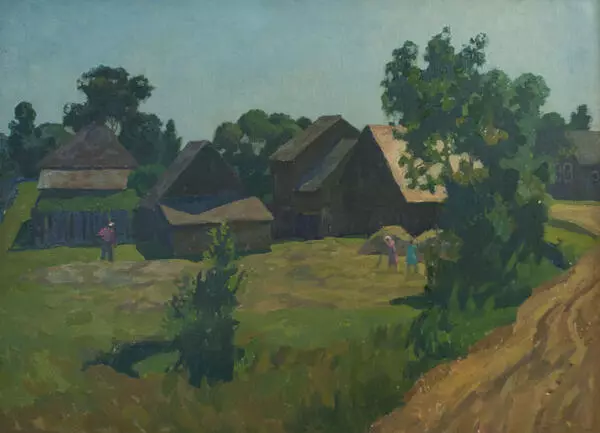Vladimir Vyacheslavovich Shcherbakov (1935–2008) was born in Moscow, in Lefortovo. Later he found out a lot about the history of his family, which included an Old Believer bishop and Moscow merchants. Shcherbakov graduated from the Moscow Secondary Art School, and then from the Surikov Moscow State Art Institute, where he studied in the workshop of Konstantin Mefodiyevich Maksimov.
The year of his graduation from the Institute (1961) coincided with significant changes that were taking place in Soviet art. Artists began to create innovative works that showed an alternative view of life, different from the traditional one. Notes of disagreement with the principles of reflecting life in the tradition of “awaiting the radiant future” were rather audible.
Vladimir Vyacheslavovich Shcherbakov belonged to the second wave of the “Sixtiers” that, instead of praising grandiose construction projects, focused on modernity, as well as on village and provincial life. The artist’s philosophy was inspired by the 19th-century culture.
The Volga villages and the great river itself fascinated Shcherbakov. For him, the rural landscape was a special realm. In his 1983 work “Warm Evening”, the People’s Artist of the RSFSR and corresponding member of the Russian Academy of Arts, Vladimir Shcherbakov captured a moment of a sultry summer evening.
The artist painted the picture in the style of Nikolay Petrovich Krymov: his manner of painting is heavy and the state of nature is easily recognizable. In the work, one can note the artist’s energetic modeling of forms, rich dense color, emphasized silhouettes of trees, saturated warm tones, and a sultry sky. The house is illuminated by the rays of the setting sun. The wind does not disturb the crown of the tree. Everything stands still, everything is prostrate from the heat.
Lyudmila Tsyplakova wrote in the publication “The Artist’s Path” of the Art Prima Gallery:



